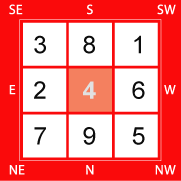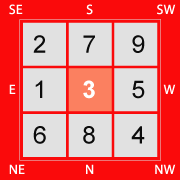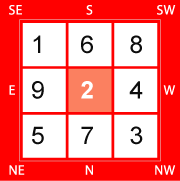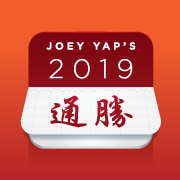We are quite lucky here in Kuala Lumpur we are blessed with a variety of gastronomical delights. And as anyone who
knows me well will tell you, I am a big fan of good food.
So, it was only natural for me to happily accept a friend’s invitation to dinner – he is a Feng Shui enthusiast and we always
have interesting discussions when we get together.
Halfway through my bak kut teh, the proprietor of the restaurant approached me and introduced himself. My friend was a long-time customer
of his and apparently the restaurant owner had begged him to bring me to his restaurant. Caught a little off-guard, I only had a chance to
mumble a ‘hello’ before he told me he had seen my show on 8TV last week and wanted my opinion on the Feng Shui of his restaurant.
Before I could reach into my bowl for another mouthful, he was already pointing out a Lucky Cat he had on the corner of his restaurant. As my friend had
already whipped out a travel Luo Pan he had brought along and was urging me to do him a favour, I decided the only way to eat my meal in peace was to settle
this once and for all. I don’t usually undertake Feng Shui Consultations unless professionally engaged by the client and come prepared but considering the
circumstances, I decided it might seem rude to both my friend and the restaurant owner to decline.
So out came the travel Luo Pan for a quick measurement of the premises. He said the Lucky Cat generated some good luck when he first put it in the corner but
after a few months, his business wasn’t doing as well as it once was and even his usual customers visited less frequently.
His question was, ‘does the Cat have the correct paw up?’.
If you are wondering what this Lucky Cat is, this is a small porcelain statue of a cat that is shown standing on its hindquarters waving. The electronic version o
f this has the paw actually moving up and down – as if waving at customers to come in. I remember seeing it only at Japanese restaurants but the trend seems to have
caught on all over the place.
After checking the facing direction of his premises, I quite easily told him his Cat was in the wrong position. And that it should be in the Southwest corner of his restaurant.
I pointed out the spot in the back where it should go.
“Why is the front of the shop the wrong place for it? Is the paw wrongly placed?”, the owner, Loong, asked me.
I shook my head. ‘No, you see Mr. Loong, you had this Lucky Cat in the Northeast sector last year – in front of the shop. And this year,
the business has not really been as expected, am I right?’, I asked him.
He nodded in agreement.
Well, last year (2004) the Annual Star #8 was in the Northeast sector – most of you may already know that the
#8 Star is the Wealth star in Period 8 (2004-2023).
2004
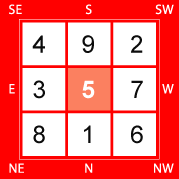
Which paw the Cat is holding up, has no bearing on the Feng Shui of the property – it had more to do with the slow moving object (the electronic swinging of the Cat paw)
that helped stimulate the Qi in the area.
You see, annually there are changes in the Qi of the property that we can tap into or activate to help us in our endeavours. This year, 2005, the Wealth Star #8 is in the
South and so the Cat no longer stimulated the flow of Wealth Qi when it was still kept in the Northeast.
“Okay, I see how it works now, but shouldn’t the Cat be in the South for this year? Why did you ask me to move it to the Southwest then?’, Mr. Loong quickly asked me.
My reply was already on the tip of my tongue, ‘the Southwest has the Star #1 this year(2005), the star #9 in 2006 and the star #8 in 2007. If you have your ‘moving’ object there – you are set. For the next three years, it will help stimulate the flow of Qi without you having to worry about it.
These numbers you see in the charts above, represent bodies of Qi in a particular sector during these years. As a general guide, the positive Qi areas are represented by
the numbers #8, #9 and #1.
“So, it really doesn’t matter what direction the Lucky Cat faces or which paw is up?’
I smiled and explained, ‘Of course not, your Lucky Cat is just a cat statue made of porcelain. No different to any other. It’s a man-made object with no possibility of
generating any Qi on its own. The idea that it can create ‘wealth’ is just a Japanese lifestyle invention. It’s usually used for ‘fun’ and not for any Feng Shui purpose’.
‘But a Taiwanese customer told me to put it up saying that it was a very popular Feng Shui symbol’, he weakly protested. ‘Is your customer a Feng Shui Master?’, I asked him. Mr.
Loong shook his head when the obvious dawned on him.
People often listen to some random advice disbursed by a friend without really knowing what it’s about or how their friend came to know about it. More often than not,
it’s a superstitious titbit their friend would have picked up from some unreliable source. Why then does some superstition seem to work at times?
Well as you can see from our story today, sometimes the placement of a moving object helps stimulate the existing Qi within that sector – AT THAT POINT IN TIME. It is
NOT the object that is generating the Qi but simply acting as a catalyst for the Qi that is already in that area.
If you kept an open window or door in that sector and used it often, it would serve the very same purpose. No need for any items of an ‘auspicious nature’.
Where businesses are concerned, Feng Shui especially needs to be implemented in a subtle fashion. Have you ever seen a major corporation with lots and lots of Good Fortune
items in their lobby and around their office buildings? Of course not, think about it.
Then how do large corporations apply Feng Shui? It’s all done by strategically placing their Main Door, their walkway / passages and ideal location of key management offices.
Once the Qi is flowing, your Feng Shui is already good. No object is needed. Now that’s the real art of Classical Feng Shui.






